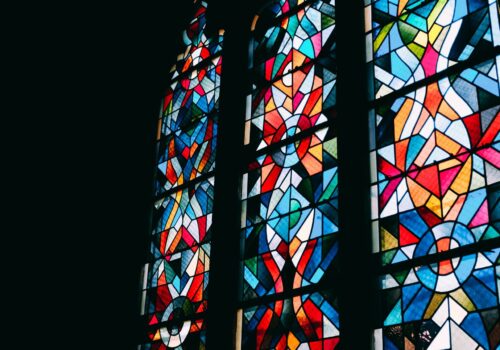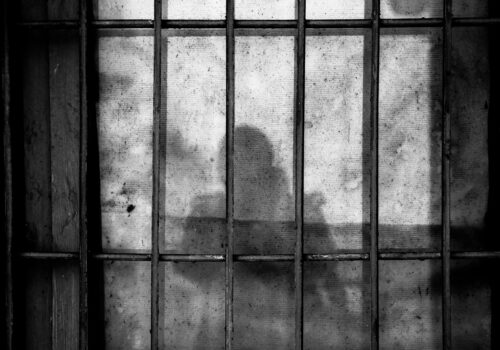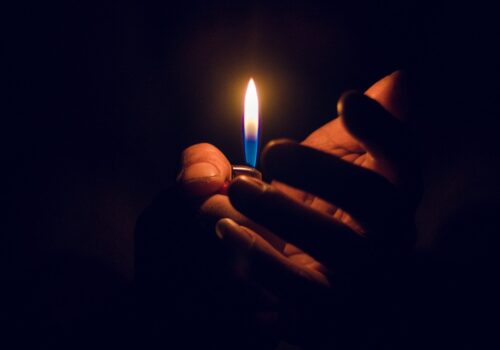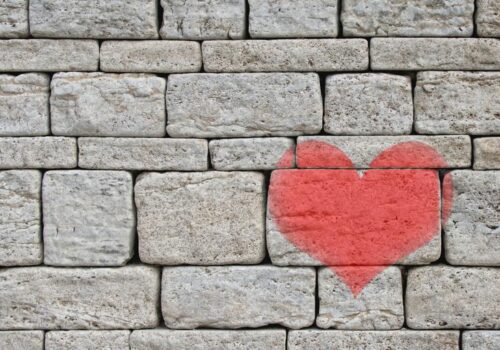Download PDF: Interview with Mary Ann Burris
“All too often, international health work ignores culture and context in its effort to accomplish quantifiable health outcomes. However laudable these goals may be, without including the values and beliefs that define a place and the people living in it, our work will fail to find local agency or excitement. The Trust for Indigenous Culture and Health (TICAH) in Nairobi, Kenya was founded on the belief that the first step in doing good work is to listen. When we listen, culture pours in. Values are shared. Health is defined in ways that make sense, that spring from the details of daily life. Sometimes bringing elders and healers forward to share their herbs or recipes, sometimes using art to capture a story and create a healing space, TICAH’s work and TICAH’s founder, Mary Ann Burris, have built a body of work and a way of working that honors spirit and listening in order to learn. This interview with Mary Ann and the short clip of a body mapping workshop that she and other TICAH colleagues recently hosted in New York, demonstrate the power and practicality of starting where people are—in their skins, in their stories.”
—Mary Ann Burris
1) Tell us a bit about how and why TICAH got started.
I set up TICAH because I wanted to honor and explore the positive connections between culture and health. Over the years of international health and development work I had done, I had been amazed at how little serious attention was paid to culture, or to spirit, as part of the development agenda. You had anthropologists occasionally brought in to spice up a consultancy, but you mostly had folks who thought that you could “hold culture constant” and focus on the pathogen without asking any questions about values or belief—without listening. Traditional healers might be brought in and co-opted to distribute condoms, but rarely were they asked where they thought HIV came from or what they thought were the most effective ways to deal with it in their communities. So, there was this blind spot created by ignoring culture, and I felt that you could do good work, accomplish practical as well as transformational things, if you went about it by first listening—if you did health work through the lens of culture.
2) Where and with whom do you work?
TICAH is based in Nairobi, Kenya. Most of our work is in Kenya, but we also have strong working relationships with people and organizations in Asia and, more recently, in the USA. For three years, we helped run a cross-regional learning network funded by the Rockefeller Foundation called the “Africa-Asia InterAction on AIDS” that included partners from Thailand, Vietnam, China, Laos, Burma, Cambodia, Kenya, Uganda, and Tanzania. Those working relationships are still alive. TICAH’s very first project was to help host a traditional healers gathering connected to the All-Africa HIV/AIDS conference (ICASA) held in Nairobi in 2003, and we continue to work with herbalists and healers at all levels of our work. These days most of our work at TICAH is in the slums of Nairobi, with youth groups, local community organizations, and HIV support groups. We “train.” We facilitate group learning. Our “Healthy Households” work in the slums started out as a training program about common illnesses, nutrition, simple herbs, and rights and services for HIV-positive people and their families. When we started teaching and exchanging about good food, gardens, and herbal remedies, others joined in—teachers, preachers, community health workers, kids. We started doing art with positive and vulnerable children during school holidays, and we continue to do art, theatre, and other such programs with, by, and for HIV-positive adults. Painting body maps1[1] or engaging in a creative art process is therapeutic, and it shares experiences in a way that draws in the heart as well as the head. In the process of painting those body maps, those self-portraits, we reflect on our lives, share our experiences, talk about our problems and our solutions, count our blessings, and tell about our pain. We reveal our stories to ourselves and to others in a compelling, engaging, and beautiful way. The result is a strong new kind of voice for change—a voice that is both seen and listened to.
Our current effort—to host body mapping workshops with HIV-positive support groups in the USA and build a body of work to present at the 2012 International HIV/AIDS Conference in Washington, DC—is a way to bring intelligent attention to the stories of positive people’s lives in America. Whenever I work with our counterpart organizations in the States, I feel that they may have even greater barriers of silence and stigma surrounding them than we find in other parts of the world. People seem to think, “The AIDS medicines are available; so what is the problem?” It really is not that simple. There is a young female epidemic brewing in the USA, and people seem blind or complacent. We hope that, by bringing a strategy from the developing world back to the States, we will build not only a provocative exhibition and performance but also real relationships.
3) Storytelling seems to play a large role in what you do at TICAH. Why is that important?
We find truth in the single woman’s story. We believe that listening can also be healing. All that we do at TICAH is based on a belief that the means are the ends. The process of listening and sharing is also a process of organizing, advocacy, and research. If what we are about is health and healing, mediating the effects of poverty and violence, and encouraging a culture of peace and respect for rights, then we had better be listening to people’s stories. We had better be “listening into speech” the otherwise voiceless or vulnerable. Stories are not irrelevant simply because they convey the conditions, needs, and situation of only one person at a time; they are roadmaps for what we are doing right and wrong. You can count stories and analyze stories, and it is important to have the perspective of whole nations, of communities, of regions, and of the world, too. Our work is to honor the stories, learn from them, and do something about it where and when we can.
4) Tell us about the body mapping project. How and why did this project come about?
We first started doing body mapping at TICAH to find a common language to share between Asia and Africa. After the traditional healers’ conference we hosted with PROMETRA, TICAH launched a project called “Listening To Those Who Live It.” This was a simple idea. We interviewed HIV-positive people in Asia and Africa to learn about their treatment experiences, to compare notes, and to see what was working for whom and what lessons could be shared. Positive people were hungry to learn about the choices other positive folks were making and what the results were; they wanted to find out about herbs, foods, and medicines that had worked, or failed to work, for others. They wanted to know about the larger circumstances shaping health—spiritual practice, happiness, work, sex, love, family, faith, food—all the other things that determine whether we are healthy or not. So, after collecting some sixty or so interviews, we put together a book called “Nine Lives” that presented the treatment stories of four folks from Asia, four from Africa, and one from San Francisco. At the Bangkok HIV/AIDS conference in 2004, we invited six of the nine to a panel, and we did a “show and tell” about how we stay healthy. It was amazing! There were so many foods, herbs, and attitudes to share. We were doing this exchange in five different spoken languages, so I got the idea to do paintings to tell these stories. There was a group in Uganda and one in South Africa who had started painting body maps as part of “memory work”—art and writing to leave a legacy behind for your kids when you died of AIDS. We took the concept of painting life-size self-portraits and adapted it to our goal of sharing our strategies for coping, for staying healthy, happy, and strong. So, when we were awarded a small grant to put together a performance piece and exhibition for the 2005 HIV/AIDS conference in Kobe, we hosted three body mapping workshops—one each in India, Thailand, and Kenya—and then brought the maps and some of their painters to present their work on the stage in Japan. It was fabulous! People were crying, laughing, singing, and sharing. The workshops themselves—five days in which we shared and painted our body maps—were incredibly filled with healing, spirit, and love. We knew we were on to something, and since then we have hosted body mapping workshops with different kinds of groups—HIV-positive women, positive men, positive children, sex workers, cancer survivors, and others. Each of us has an embodied story. These body mapping workshops allow us to share and learn from one another and then feel powerful enough to share them outside the circle—to use them to make a statement about what needs to be done.
5) What kinds of stories do the maps tell about health and healing?
The maps show clearly that health is about our hearts, our bodies, our communities, our families, and our faith. We paint our strengths and our illnesses, our histories and our hopes. Outside the lines of our bodies, we paint anything that influences our health and happiness. We are more than our HIV status and our medicines. Some people paste photographs, pieces of cloth, herbs, music, or medicines onto their maps. Others trace their children on their maps. Nearly every map has a spiritual or religious dimension, too.
6) What role does religion or spirituality play in the creation of the maps or in the maps themselves?
The realm of symbol is a deep one. When we paint our body maps, we first sketch symbols that represent our pasts, our illnesses, and our strength. We meditate throughout the workshop and lead discussions about our experiences and about what has or has not worked for us. Sometimes we pray together or sing. Spirituality—in the deep sense of where we feel connected—is everywhere in the room during our workshops. There is a tender place that we create, and in that space we bear witness.
7) Does religion come up in the mapping workshop? How, and why do you think that is?
Religion comes up because what we feel about the meaning of life, our relationship to the invisible, and our relationship to our ancestors, are all part of what makes us happy or sad, healthy, or preparing to die. Our faith determines what we think happens when we die. So, religion is, of course, connected to any deep expression of what makes us healthy or unhealthy, how we respond when we are sick and afraid, and how we treat others and ourselves. The Thai body map painters did a serious meditation before each day of painting and sharing. The Kenyans pray, both to Allah and to Jesus, before each day. We do not enter the workshop from the perspective of a particular religious doctrine or ritual, but we open ways to the numinous. We honor spirit.
8) We’re a journal that deals with religious practices. Can you describe the practices of creating the maps?
Our body mapping workshops are rituals. And, in the sense that we are open to the sacred, to the symbolic and deeply meaningful, they are religious. I go on a retreat to Chartres each year. Walking the labyrinth in the cathedral is a three-part ritual about release, receiving, and returning. Over time, I have come to see the body mapping process as likewise one in which we release some of the burdens we have been carrying; receive the grace the comes from that safe place where secrets can be told, tears shed, and hope ignited; and return to our lives stronger and more confident. We have created beauty, and we have reflected on our lives in a safe, nurturing place, a sacred place.
9) Why do you think the arts are important for healing work?
Creating art and seeing art can be transformational experiences. Art gives us a way to share an outlook or an experience, to interrogate an issue or idea, or to tell a story or a dream. The stigma and silences surrounding illness can be broken open through art. We do art projects with positive children in the slums and with vulnerable children in orphanages. It is therapy, yes, and in the process of creating a space where their stories can be painted and shared, we are also creating a space where the children can get a new perspective on their problems, realize they are not alone, or honor a feeling or a person they love and have lost. Art is breath and life; it is re-membering. Genuine healing is surely connected to this.
10) Tell us about the work you do with traditional medicine. Why is that important in HIV/AIDS work?
Our work includes traditional medicine from the healer side and the patient side. Cultural elders, herbalists, healers, those entrusted with ancient ways of living on the land in harmony—these people have a lot to offer our efforts to establish the balance we need to maintain and protect health. And, from the other side, when you listen to HIV positive people, sick people, or even yourself when you are sick, you quickly hear that everyone wants to know how best to eat and what herbs can prevent or treat the illness. We produced a 196-page book—“Using Our Traditions: A Herbal and Nutritional Guide for Kenyan Families”—by hosting discussions with HIV support groups, collecting their herbal remedies and recipes for staying healthy, and then vetting their strategies with an expert panel of herbalists, clinicians, conservationists, and lay experts. With a few good partners, we have also designed and put in place a beautiful medicinal plant demonstration garden at the National Museum of Kenya called the Medicine Shield Garden. Our herbalist-gardeners receive hundreds of visiting Kenyan school children each week in that Nairobi garden, and it has become a much-loved public space for all visitors to the National Museum. We host all of our community events and graduations there, where we can learn about the 150 medicinal plants in the garden. HIV is, of course, about our immune systems; so AIDS care includes all effective strategies for strengthening our bodies and treating illness. People want what works and is available to them. Allopathic medicine, indigenous herbal medicine, and other modalities of care need not be conceived of as in opposition to each other. Most of us combine therapies and tailor our own treatments, no matter what the doctors tell us. The more we can learn from our own cultures about these things, the better—not in order to accept or replicate wholesale what we have inherited, but to bring our inherited wisdom in to illuminate and serve the present.
11) Is there anything, based on your work, that you would like to tell academics and practitioners who work at the intersections of religion and health?
I would first like to say that I am glad that there are such people, both those of you working in health with an appreciation of spirit and those who are in religious communities with an applied interest in health. To those practitioners, particularly in the large-scale donor-driven international public health world, I would caution against the current obsession with “scaling up” and “reach.” Transformational change happens one heart at a time, one person at a time. That does not mean that you needn’t be strategic and do the most you can with what you have. But it does mean that you ought to honor the single story, the representational experience. It means that you always start with questions and not with answers, that the process of doing the work is also the process of deciding what work is best to do. So many huge development projects start with such a straitjacket of indicators and interventions that they trip themselves up and waste time and money when, in fact, they are meant to be “expedient.” Social change does not operate the same way a marketing campaign operates. Complicated health issues have multi-tiered and multiple solutions, and they are rarely uniform, as we ourselves are rarely uniform. Taking time to ask and to listen, remaining humble and curious—these things remain the hallmarks of good work and good process. Those moments when we feel touched by a miracle, when the beauty, pain, or mystery of life reaches in and grabs us from the inside out—those should be part of our work, too. That feeling is part of why storytelling is so important. We relate. We see and feel how we are all related.
Mary Ann Burris is the Executive Director of Trust for Indigenous Culture And Health (TICAH).
Annie Hardison-Moody is a doctoral student in area of Person, Community, and Religious Life in the Graduate Division of Religion at Emory University.
Notes
[1] Body maps are life-size self-portraits that you paint by tracing your body on a canvas, doing imprints of your hands and feet, and then painting your embodied story inside and outside the lines of yourself.






